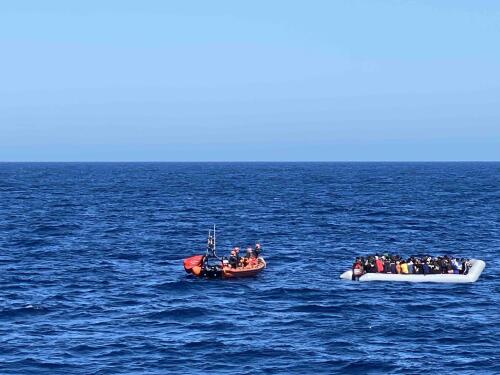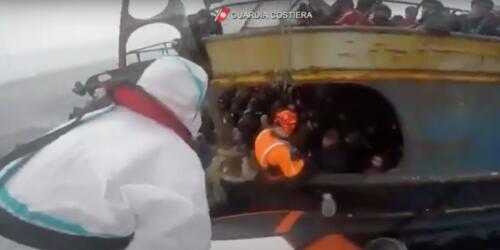salvataggi in mare
There are numerous rescue ships operating in the Mediterranean, however not enough to deal with the number of people in danger along one of the most dangerous migratory routes in the world.After the termination of the Mare Nostrum program in 2014, the Civil Fleet, the civilian fleet of monitoring and rescue ships active in the Mediterranean, has become practically the only resource for those risking their lives during the dangerous illegal crossing. The stretch of sea that extends from Libya or Tunisia to Italy represents a lethal physical barrier, especially for makeshift wooden or rubber boats, often recycled several times by traffickers.Until 2014, the Mare Nostrum operation, started in 2013 in response to the increase in shipwrecks in the Sicilian channel, it had a double mission:guarantee rescue at sea and criminally prosecute those who profit from the illegal trafficking of migrants.Shortly after the end of Mare Nostrum, replaced by Triton in 2014 - a European rather than jus...
It's a terrible déjà vu.A new shipwreck in international waters that brings with it the usual dynamics:absurd hesitations and disputes between states which then translate into delays in rescue and rescue operations.In fact, 30 hours passed between the Alarm Phone report (a call center that reports emergencies at sea managed by the NGO Watch The Med), on the night of March 11, and the intervention of the Italian authorities, after the unavailability and silence of the Libyan and Maltese maritime authorities.The budget is dramatic:17 survivors, 30 missing in the cold sea of March. 6⃣ The dramatic balance sheet on the 47 Castaways:thirty hours after the 🆘 AlarmPhone 17 survivors30 missing The elapsed time:disputes with other states(knowing from the start that Libya, Malta and Greece are historically unreliable ed.) The Coast Guard statement ⚓️🇮🇹 pic.twitter.com/NN3l1Mk8j3 — Sergio Scandura (@scandura) March 12,...

